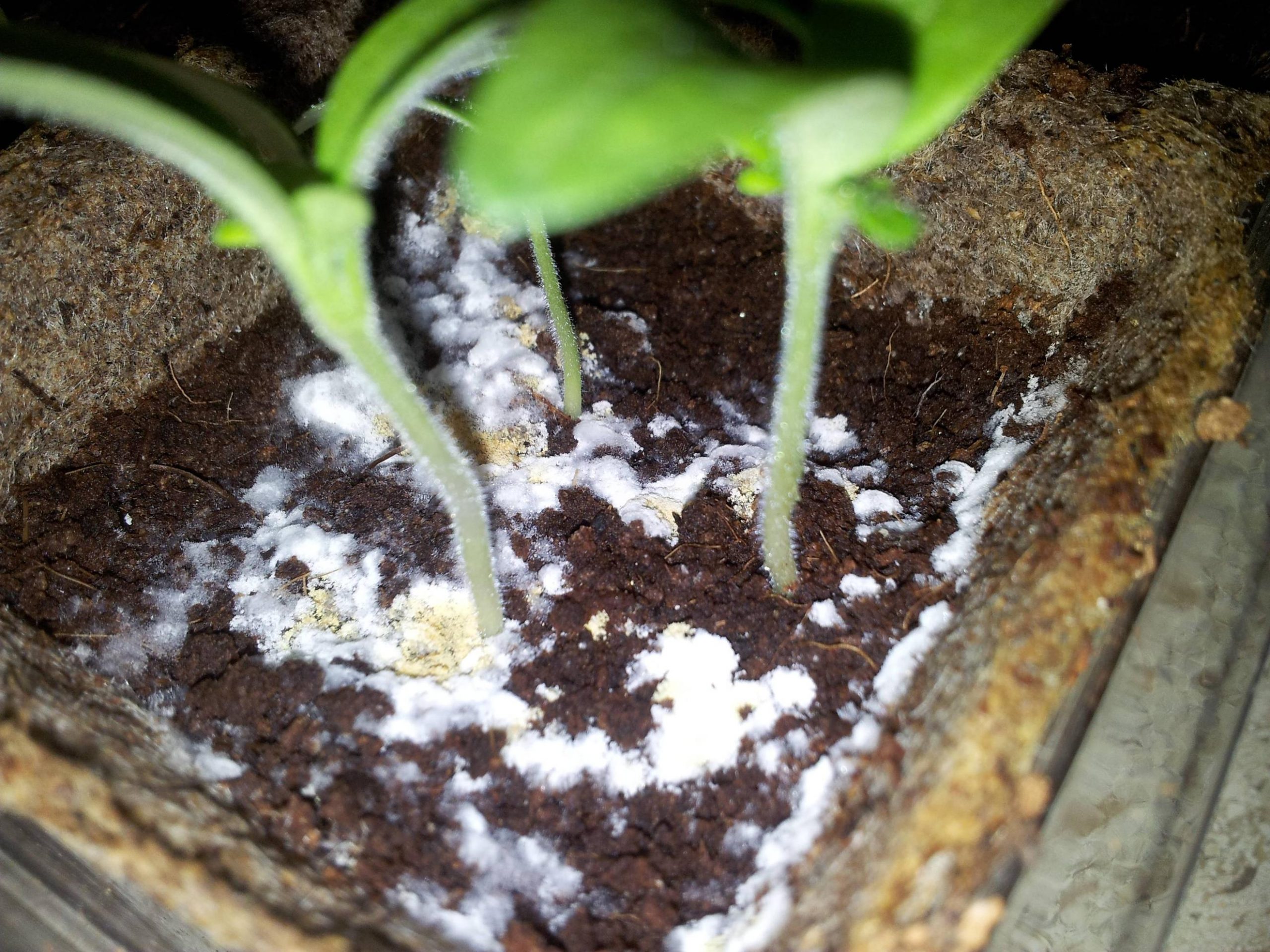
Many times white mold in garden soil and plant diseases become very evident, making detecting them a little easier and can help the plant heal quickly. But white mold is a little quieter and more discreet, which makes it a much more dangerous disease and that when it is discovered, it is too late to rescue the plant. We tell you everything you need to know about white mold and how to prevent it.
What is white mold in garden soil?

Sclerotinia or white mold is a disease that directly affects plants and crops, especially during the spring. This fungus belongs to the necrotrophic family, which means that it will first kill the plant cells and then absorb their nutrients until they kill it and continue feeding on the host despite having killed it.
This fungus has a great capacity for survival and adapts easily to different sites. The most common area to find sclerotinia is in the soil, although it can also be present in plant debris or weeds. If conditions are good for the fungus, it can survive in the soil for up to 10 years. Discover When to plant roses?
How does white mold in garden soil affect plants?
The damages that sclerotinia produces are various, starting with damping-off, which refers to fungal wilt. A watery-looking white layer usually appears on the plant, which over time is responsible for drying the leaves and stems of the plants. This fungus can be extra dangerous since many times it is harbored in the seeds of plants, which prevents their growth or once they grow, they already grow infected, which makes it almost impossible to treat this disease.
This same fungus can produce hard black masses of irregular shape that develop within the soil and on the surfaces of diseased plant parts of crops and plants. Although this fungus is more common in large harvest fields, it can also affect house plants and even indoor plants.
How to detect the fungus?
The symptoms can vary depending on the affected plant, but they are generally very easy to recognize if you know what you are looking for. The first obvious symptom is showing lesions on the stems, such as withered stems, brown spots on the petals and flower buds.
Another clear indicator that your plant suffers from white mold is the appearance of cottony masses on the stems or in nearby soil and sclerotia on the plants and inside the plant stems. Finally and the clearest indicator is to find sections of the dry plants with a slimy texture and a white coating on top. Unfortunately, if this is the case, it is probably too late to save this plant.
How to combat this disease?
Unfortunately, it is very difficult to treat white mold once it has attached itself to plants and roots. This is because plant damage cannot be detected until it slowly dies.
If it is detected in time, you can try to combat this fungus. Ideally, infected and wilted plants should be removed to not contaminate other plants and thus avoid the spread of sclerotia in the garden. Another important tip is not to compost diseased dry plants to avoid transmitting the fungus to the ground. Instead, you simply have to discard them. Also, consider transplanting the infected plant to an area where it is isolated and with fresh soil.
Currently, many fungicides and chemical treatments can be used to combat these dangerous fungi. However, many can be harmful to the environment and be counterproductive. Most chemical remedies are usually quite efficient, but make sure you read the instructions carefully and know the risks to the plant and its neighboring plants.
How to prevent white mold?
Fungicides are generally designed to prevent fungal growth. But apart from opting for the proper treatment, several preventive measures can be taken to prevent the growth of white mold and its spread.
A technique that can be beneficial is to make sure to space the plants for better air circulation or install raised beds. This can help prevent sprouts as the soil dries more quickly after watering and dry soil is not ideal for sclerotinia. It may also be good to rotate crops because fungi are specific to the crop, so a rotation means it will ensure more disease-resistant plant growth.
Finally, it must be remembered that land that has suffered a serious infestation becomes dangerous terrain, so the only option is to remove and replace the infected soil with fresh soil.





